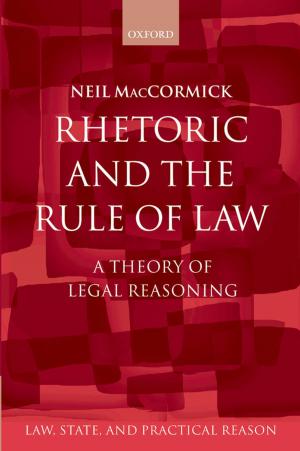Forensic Science: A Very Short Introduction
Nonfiction, Reference & Language, Law, Forensic Science, Social & Cultural Studies, True Crime, Social Science| Author: | Jim Fraser | ISBN: | 9780191609664 |
| Publisher: | OUP Oxford | Publication: | February 25, 2010 |
| Imprint: | OUP Oxford | Language: | English |
| Author: | Jim Fraser |
| ISBN: | 9780191609664 |
| Publisher: | OUP Oxford |
| Publication: | February 25, 2010 |
| Imprint: | OUP Oxford |
| Language: | English |
Forensic science is a subject of wide fascination. What happens at a crime scene? How does DNA profiling work? How can it help solve crimes that happened 20 years ago?In forensic science, a criminal case can often hinge on a piece of evidence such as a hair, a blood trace, half a footprint, or a tyre mark. High profile cases such as the Stephen Lawrence enquiry and the Madeleine McCann case have attracted enormous media attention and enhanced this interest in recent years. However, the public understanding of forensic science is poor, and largely based on TV shows such as CSI: Crime Scene Investigation, which exploit high-tech imagery for dramaticeffect.Forensic science is a complex activity at the interface of science and law. However, it also deals with real life issues and its results are interpreted within unique situations. Complex scientific findings must be considered carefully, dispassionately, and communicated with clarity, simplicity, and precision.In this Very Short Introduction, Jim Fraser introduces the concept of forensic science and explains how it is used in the investigation of crime. He begins at the crime scene itself, explaining the principles and processes of crime scene management. He explores how forensic scientists work; from the reconstruction of events to laboratory examinations. He considers the techniques they use, such as fingerprinting, and goes on to highlight the immense impact DNA profiling has had.Providing examples from forensic science cases in the UK, US, and other countries, he considers the techniques and challenges faced around the world.
Forensic science is a subject of wide fascination. What happens at a crime scene? How does DNA profiling work? How can it help solve crimes that happened 20 years ago?In forensic science, a criminal case can often hinge on a piece of evidence such as a hair, a blood trace, half a footprint, or a tyre mark. High profile cases such as the Stephen Lawrence enquiry and the Madeleine McCann case have attracted enormous media attention and enhanced this interest in recent years. However, the public understanding of forensic science is poor, and largely based on TV shows such as CSI: Crime Scene Investigation, which exploit high-tech imagery for dramaticeffect.Forensic science is a complex activity at the interface of science and law. However, it also deals with real life issues and its results are interpreted within unique situations. Complex scientific findings must be considered carefully, dispassionately, and communicated with clarity, simplicity, and precision.In this Very Short Introduction, Jim Fraser introduces the concept of forensic science and explains how it is used in the investigation of crime. He begins at the crime scene itself, explaining the principles and processes of crime scene management. He explores how forensic scientists work; from the reconstruction of events to laboratory examinations. He considers the techniques they use, such as fingerprinting, and goes on to highlight the immense impact DNA profiling has had.Providing examples from forensic science cases in the UK, US, and other countries, he considers the techniques and challenges faced around the world.















